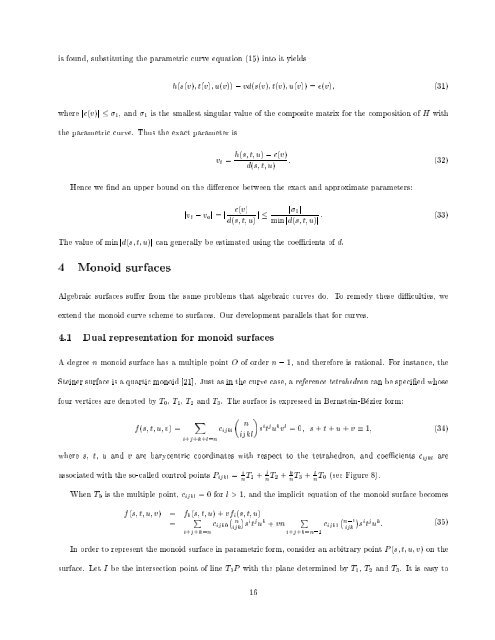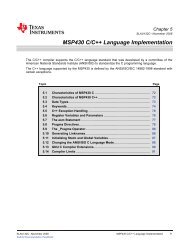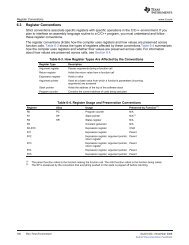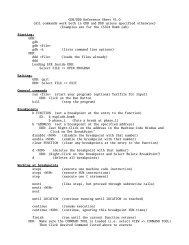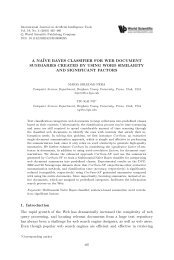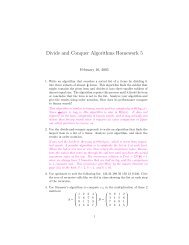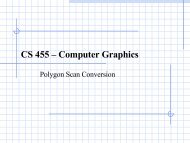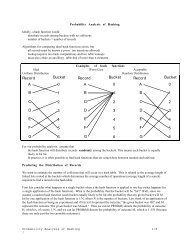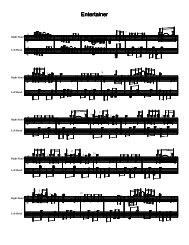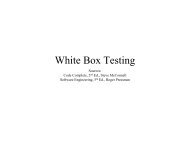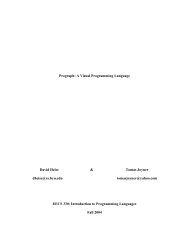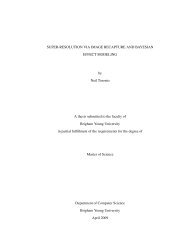Approximate Implicitization Using Monoid Curves and Surfaces
Approximate Implicitization Using Monoid Curves and Surfaces
Approximate Implicitization Using Monoid Curves and Surfaces
You also want an ePaper? Increase the reach of your titles
YUMPU automatically turns print PDFs into web optimized ePapers that Google loves.
is found, substituting the parametric curve equation (15) into it yields<br />
h(s(v);t(v);u(v)) , vd(s(v);t(v);u(v)) = (v); (31)<br />
where j(v)j 1 , <strong>and</strong> 1 is the smallest singular value of the composite matrix for the composition of H with<br />
the parametric curve. Thus the exact parameter is<br />
v t =<br />
h(s; t; u) , (v)<br />
: (32)<br />
d(s; t; u)<br />
Hence we nd an upper bound on the dierence between the exact <strong>and</strong> approximate parameters:<br />
jv t , v a j = j<br />
(v)<br />
d(s; t; u) j<br />
The value of minjd(s; t; u)j can generally be estimated using the coecients of d.<br />
4 <strong>Monoid</strong> surfaces<br />
j 1 j<br />
minjd(s; t; u)j : (33)<br />
Algebraic surfaces suer from the same problems that algebraic curves do. To remedy these diculties, we<br />
extend the monoid curve scheme to surfaces. Our development parallels that for curves.<br />
4.1 Dual representation for monoid surfaces<br />
A degree n monoid surface has a multiple point O of order n , 1, <strong>and</strong> therefore is rational. For instance, the<br />
Steiner surface is a quartic monoid [21]. Just as in the curve case, a reference tetrahedron can be specied whose<br />
four vertices are denoted by T 0 , T 1 , T 2 <strong>and</strong> T 3 . The surface is expressed in Bernstein-Bezier form:<br />
f(s; t; u; v) =<br />
X<br />
i+j+k+l=n<br />
n<br />
c ijkl s i t j u k v l =0; s + t + u + v 1; (34)<br />
ijkl<br />
where s, t, u <strong>and</strong> v are barycentric coordinates with respect to the tetrahedron, <strong>and</strong> coecients c ijkl<br />
are<br />
associated with the so-called control points P ijkl = i n T 1 + j n T 2 + k n T 3 + l n T 0 (see Figure 8).<br />
When T 0 is the multiple point, c ijkl = 0 for l>1, <strong>and</strong> the implicit equation of the monoid surface becomes<br />
P<br />
f(s; t; u; v) = f b (s; t; u)+vf<br />
, i (s; t; u)<br />
= c n<br />
ijk0 ijk<br />
s i t j u k + vn<br />
i+j+k=n<br />
P<br />
i+j+k=n,1<br />
,<br />
c n,1<br />
<br />
ijk1 ijk s i t j u k : (35)<br />
In order to represent the monoid surface in parametric form, consider an arbitrary point P (s; t; u; v) onthe<br />
surface. Let I be the intersection point of line T 0 P with the plane determined by T 1 , T 2 <strong>and</strong> T 3 . It is easy to<br />
16


